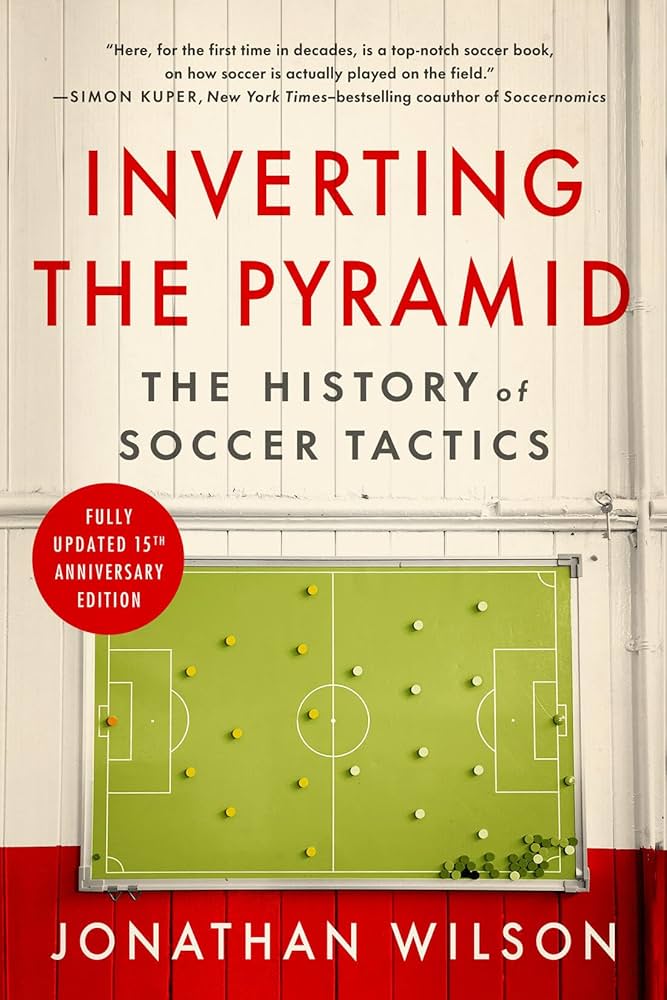(This article includes Amazon Affiliate links, on which SoccerWire may receive a commission)
When it comes to the game of soccer tactics and technique are critical to success both on and off of the field. How teams approach their practices and matches often play a pivotal role in success and how teams will fare throughout the season. The challenge is for players, parents, and coaches is how to accrue that information and continue to grow with the game.
One of the best books on the market that talks about tactics and technique at a level that is easy to digest is Jonathan Wilson’s Inverting the Pyramid: The History of Soccer Tactics. A favorite of Coach Beard’s from Ted Lasso, the book has taken on a certain level of status within the game as not just being a great gateway for those wanting to learn about soccer strategy, but for those who want to know more about the history of the game.
While there are many books out there on tactics and technique in the beautiful game what separates ITP from others is the emphasis that it places on history. As a writer, Wilson looks not just into how different tactics were created but also why the game has evolved in the ways that it has. Using history and changes in society as a vantage point, Wilson dissects the changes that have been made on the field throughout the game’s history. Starting from the game’s roots in battles between England and Scotland in the late 1800s going through the turn of the century, the two World Wars, and into the modern era ITP traces the game’s evolution through eras of prosperity and peace as well as war and instability.
[Click Here to view the book on Amazon.]
It’s an interesting context for how to frame the innovations seen on the pitch and gives the reader an easy vantage point from which to understand what is happening both on and off of the field. ITP can take both items and make them digestible for both those that are new to the game and those that are looking to enhance their knowledge of tactics and technique. Starting with the 2-3-5 formation (or the pyramid since it looks like on a tactical board), Wilson weaves through the various small and major adjustments that the game makes shifting from the aforementioned pyramid to 3-2-5 to 4-2-4 to 4-4-2 and the 4-5-1 or the inverted pyramid. ITP even goes into the history of the 4-6-0, which many US Soccer fans will remember from the 1998 World Cup.
Pressing is also a key element of the game and an area that Wilson focuses on extensively throughout the book. Especially in the modern era, Wilson spends extensive amounts of time going through the tactics of Marcelo Bielsa, Johan Cruyff, Louis van Gaal, Pep Guardiola and many other luminaries in the game explaining why they were success ful in specific moments and matches and when their tactics failed. One of the most specific examples that he provides for this philosophy is with Greece at the 2004 Euros, who were able to win top honors without ever really controlling possession.
Tactics can often be a difficult subject to address but Wilson does so in a way that keeps it fresh and also away from getting far too deep into the minutiae. There is a clear path in the evolution of the game that is laid out with history as a backdrop. The pivotal questions of why formations are implemented, what deficiencies they are meant to address, and what are some of the strengths and weaknesses of each decision are laid bare for the reader to see. In addition to providing clear, crisp analysis of each strategy graphics are also shown with how the tactics work out on paper, giving those that learn better by visual aids an extra example.
Understanding soccer tactics and technique can be a challenge. But ITP weaves through the jargon and the history of the game in a clear, concise manner that can help players and parents learn more about the game and take it to the pitch.
Click the image below to view the book on Amazon (Affiliate Link):









